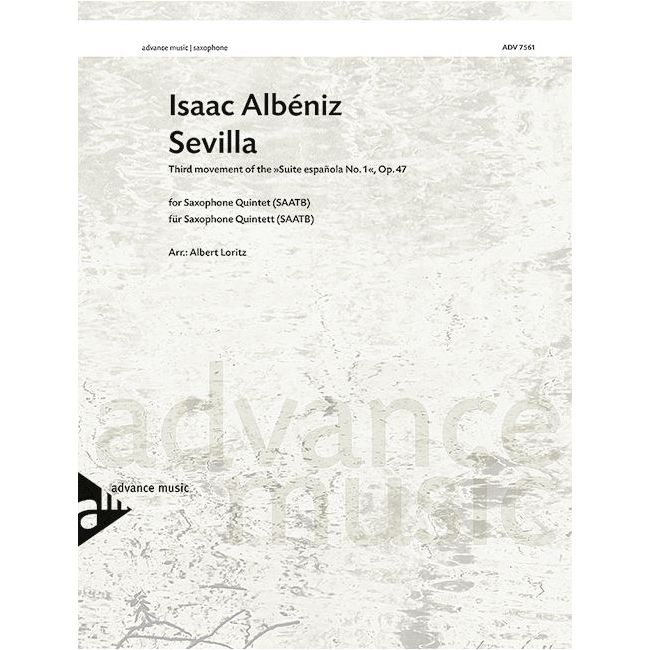| Pages | 36 |
|---|
| Publication Date | 1 January 2011 |
|---|
| Grade of Difficulty | intermediate - advanced |
|---|
| ISBN | 9783892216650 (3892216657) |
|---|
| ISMN | 9790206308864 (M206308864) |
|---|
The Spanish composer and pianist Isaac Manuel Francisco Albéniz’ (y Pascual) fascinating and eventful biography is informatively described in the relevant specialist literature; with a few clicks, though, you might also do some successful research on the internet. Albéniz is considered to be the father of Spanish national music per se. Incorporating rhythms and melodies typical of Spanish folk music, he succeeded in embedding folcloristic elements in virtuoso compositions for the piano. Sevilla is the third movement of the Suite Española No. 1 for Piano, Op. 47. The final version of the suite contains eight characteristic pieces. The title of each one of them refers to a geographical region or city in Spain – including Cuba! The folcloristic and improvisational character of Sevilla results from memorable motifs with characteristic embellishments in the melody, - the imitation of other instruments (guitar, castanets, …) in the setting for piano, asymmetrical phrases,the unexpected appearance of new motifs,noticeable fluctuations in tempo and dynamics,unanticipated modulations, the “faulty” compositional structure (e.g. octave parallels between melody and bass in measure 11), and especially from the rhapsody-like middle part with its virtuoso and at the same time cantabile melody in the upper part. The arrangement presented here is notated one whole tone lower than the original version and has been written according to the proven principle of translating: “as true to the original as possible – as free as necessary”. The movement can be performed as a quintet but also in a choral/orchestral instrumentation. In the latter case, the middle part with the soprano saxophone solo (measures 76 – 79 and measures 104 – 110) is recommended to be executed by five soloists.






